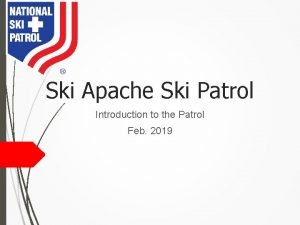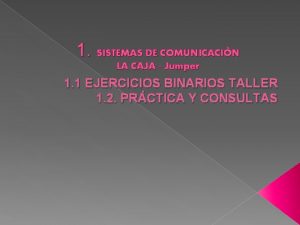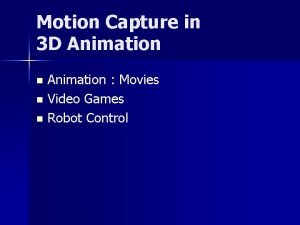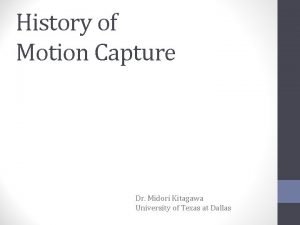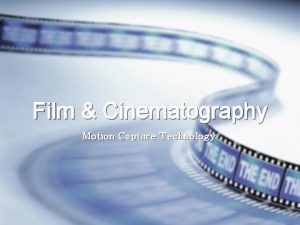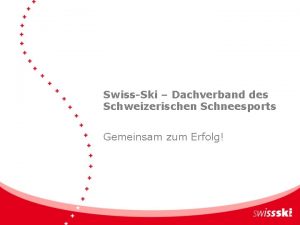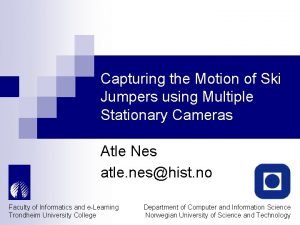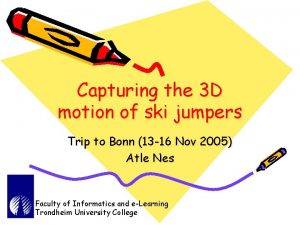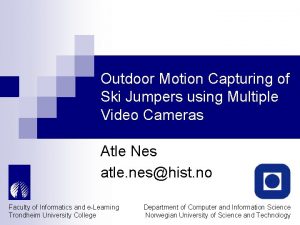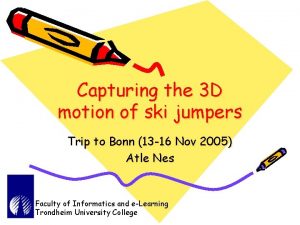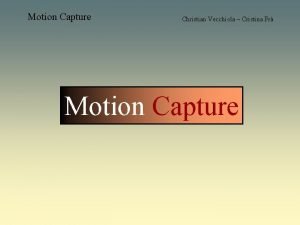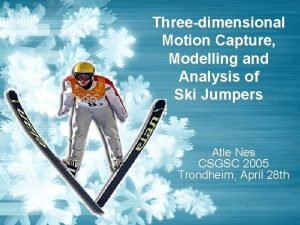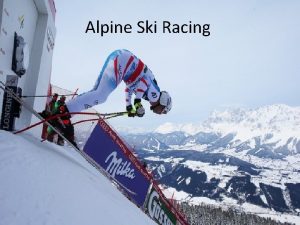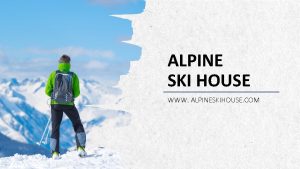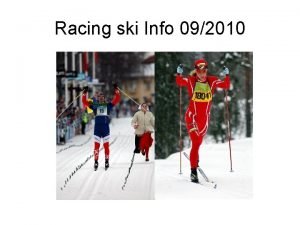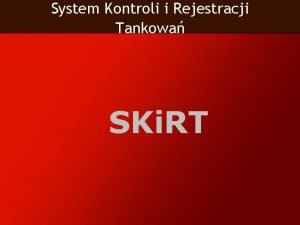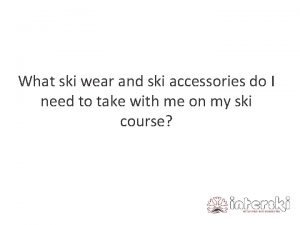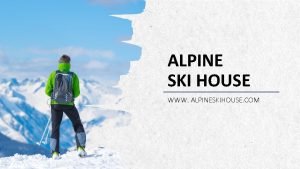Motion Capture of Ski Jumpers in 3 D

















- Slides: 17

Motion Capture of Ski Jumpers in 3 D Trondheim University College Faculty of informatics and e-learning Ph. D student, Atle Nes Bonn, 24 -28 th of October 2004

Trondheim, Norway (summer)

Trondheim, Norway (winter)

Main research areas • Face recognition (master thesis) • Human motion analysis (current)

Scenario: Ski jumpers • Want to capture and study the motion of ski jumpers in 3 D • Results will be used to give feedback to ski jumpers that can help them to increase their jumping length

Granåsen ski jump

Capture video images • Video sequences are captured simultanuously from three video cameras • Results in large amounts of video data (about 30 MByte/sec)

Our video cameras • • AVT Marlin F 080 b (x 3) Digital IEEE 1394 Firewire 8 -bit greyscale Resolution and frame rate: 1024 x 768 x 15 fps or 640 x 480 x 30 fps

Choose feature points • Want to have automatic detection of robust feature points • Robust feature points can be human body markers (easy detectable) or naturally robust features (more difficult)

Estimate 3 D coordinates • Matching corresponding feature points from two or more cameras allows us to calculate the exact position of that feature point in 3 D (photogrammetry). • Cameras are placed such that the viewing angles give good triangulation capabilities. • Triangulation and video resolution determines the accuracy.

Track features in time • Cameras must have synchronized their video streams to ensure good 3 D coordinate accuracy when tracking moving features. • Feature localization problems with blur when object (ski jumper) is moving too fast compared to the frame rate.

Connect features back onto a 3 D model • Apply the feature motion tracks to a dynamical model of a ski jumper. • Be sure that all the movements made by the ski jumper model are allowable (cannot twist his head five times or spin his leg through the other leg). • Combine the ski jumper with a model of the ski jumping stadium.

Visualize the combined 3 D model • A CAVE environment simulating a real human view gives a much better view than just viewing the model on a regular PC screen. • The mobility of the Immersion Square is very nice.

Analyse motion • Using statistical tools • Prior knowledge about movements • Project certain movements to 2 D

Related applications • Medical: - Diagnosis of infant spontaneous movements for early detection of possible brain damage (cerebral palsy). - Diagnosis of adult movements (walk), for determination of cause of problems.

Related applications • Sports: - Study top athletes for finding optimal movement patterns. Surveillance: - Crowd surveillance and identification of possible strange behaviour in a shopping mall or airport.

Any questions?
 Gradovi na ćki
Gradovi na ćki Ski apache ski patrol
Ski apache ski patrol Jumper sistemas
Jumper sistemas Triangle shirtwaist fire jumpers
Triangle shirtwaist fire jumpers Code jetpack jumpers
Code jetpack jumpers Animazoo
Animazoo Midori kitagawa
Midori kitagawa Motion capture history
Motion capture history Kahvo
Kahvo An object in motion stays in motion
An object in motion stays in motion Motion section 1 describing motion
Motion section 1 describing motion Chapter 2 motion section 1 describing motion answer key
Chapter 2 motion section 1 describing motion answer key Active rom
Active rom Describing and measuring motion
Describing and measuring motion Simple harmonic motion formula sheet
Simple harmonic motion formula sheet Section 1 describing motion answer key
Section 1 describing motion answer key Section 1 describing motion answer key
Section 1 describing motion answer key Osi inglin
Osi inglin

